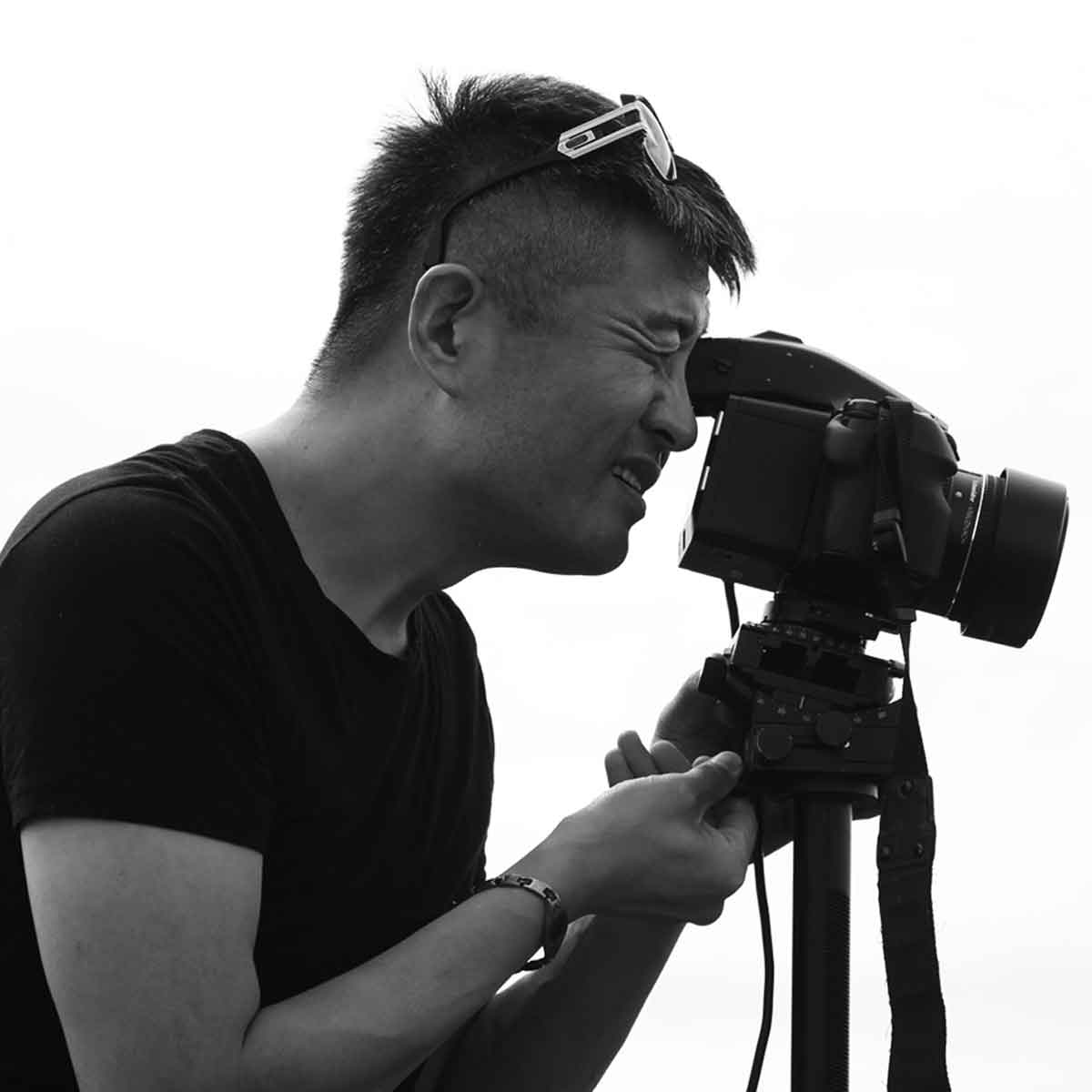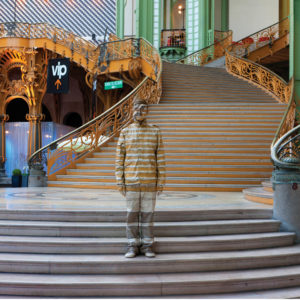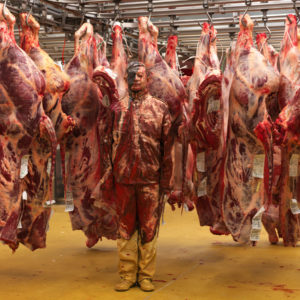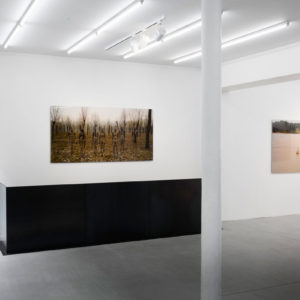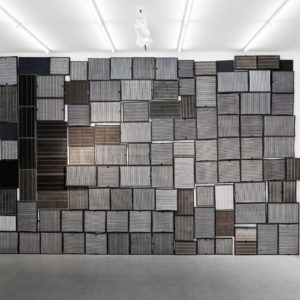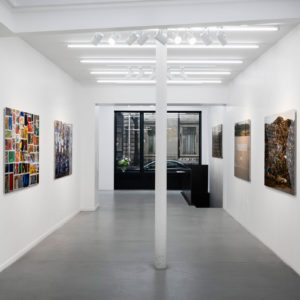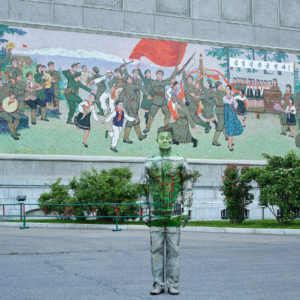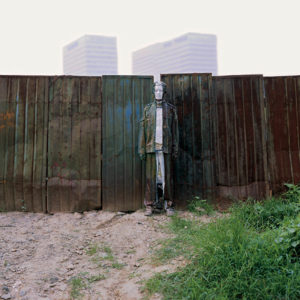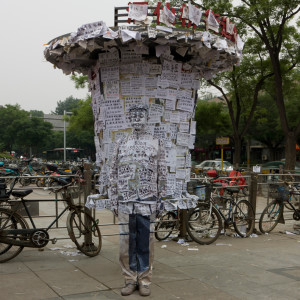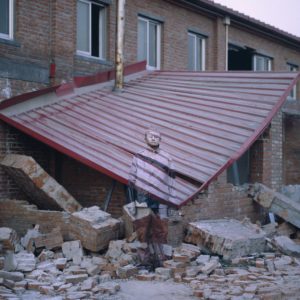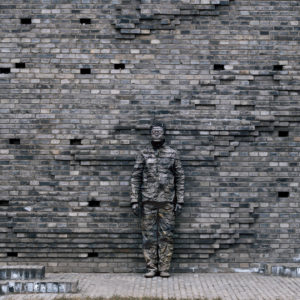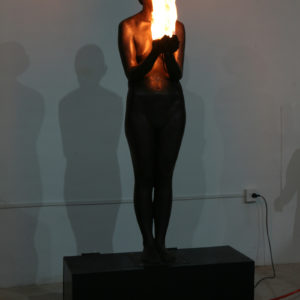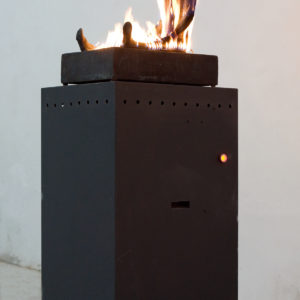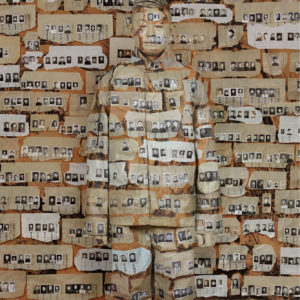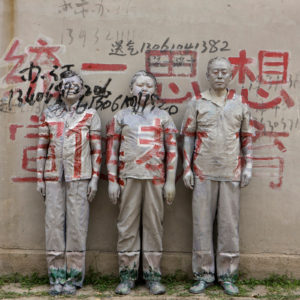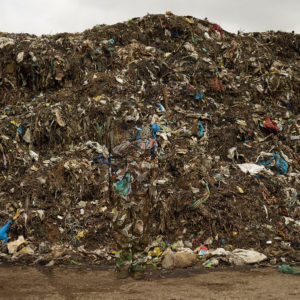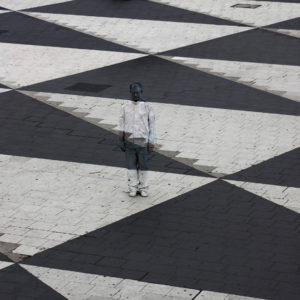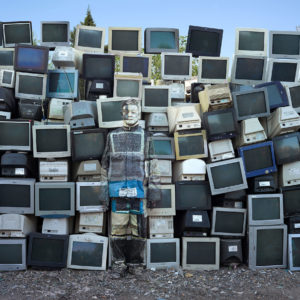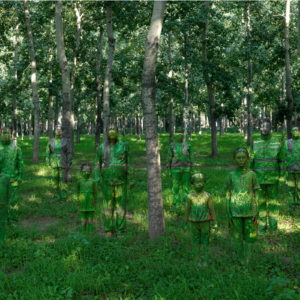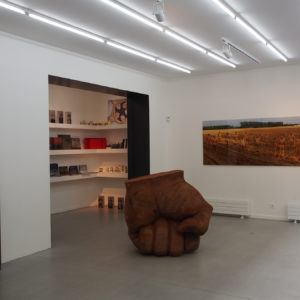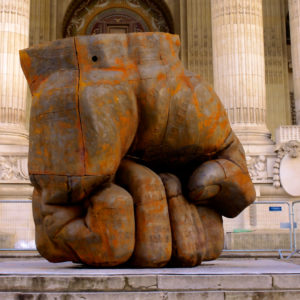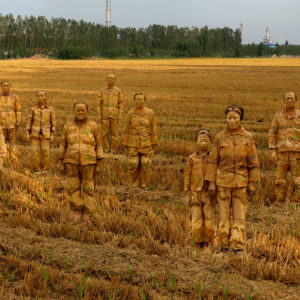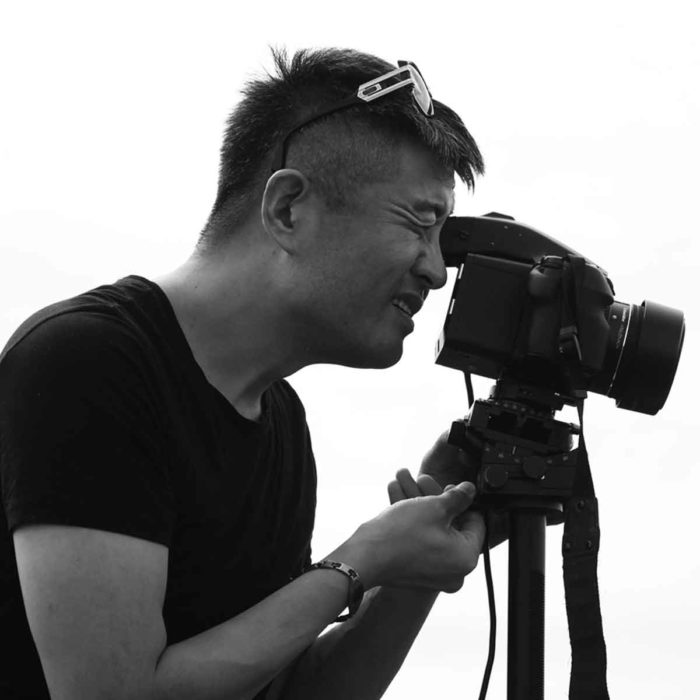Born in Shandong province, China in 1973.
Graduated from Shandong Academy of Fine Arts in 1995.
Graduated from the Central Academy of Fine Arts with a master’s degree in 2001.
SELECTED COLLECTIONS
21c Museum, Louisville, KY,
88-MOCCA, Vaduz, Liechtenstein
Allen Memorial Art Museum, Oberlin College, Oberlin, OH
ARTantide Museum, Verona, Italy
AT&T Art Collection, Dallas, TX
Baltimore Museum of Art, Baltimore, MD
Banca Aletti, Milan, Italy
Bates College Museum of Art, Lewiston, ME
Biblioteca Capitolare, Verona, Italy
Collection SOCIÉTÉ GÉNÉRALE, France
Collection NEUFLIZE VIE, Paris, France
The Fidelity Corporate Art Collection, Boston, MA
Fist Art Foundation, Dorado, Puerto Rico
Fondation Ariane de Rothschild, Madrid, Spain
Fondation Frances, Senlis, France
Fotografiska Museet, Stockholm, Sweden
The Gold Museum, Bogotá, Columbia
HBC Global Art Collection, New York, NY
Johnson Museum of Art, Cornell University, Ithaca, NY
M+ Sigg Collection, Hong Kong
MART, Museo d’Arte Moderna e Contemporanea di Trento e Rovereto, Rovereto, Italy
Museo Enzo Ferrari, Modena, Italy
Museum on the Seam, Jerusalem, Israel
Princeton University Art Museum, Princeton, NJ
The Red Mansion Foundation, London, UK
Teutloff Photo & Video Collection, Bielefeld, Germany
Unicredit Group, Milan, Italy
DSL Collection, Paris, France
Uli Sigg Collection, Switzerland
Symbolic Collection, San Diego, CA
SELECTED SOLO EXHIBITIONS
2019
La forma profonda del reale di Liu Bolin, Bocconi Unicersity, Bocconi Art Gallery, Milan,Italy
The Bigger Picture – Liu Bolin: Moving Images, Kunstlinie Almere Flevoland, Almere,The Netherlands
Hiding on the 38th Parallel North, Galerie Paris-Beijing, Paris, France
Liu Bolin / Camouflage – Ballarat International Foto Biennale, Art Gallery of Ballarat, Victoria, Australia
The Invisible Man, Palacio de Gaviria, Madrid, Spain
Continuous Refle(a)ction, Riverside Art Museum, Beijing, China
Liu Bolin “New Change” – Over the Influence, Hong Kong, China
Visible/Invisible, Mudec – Museo delle Culture, Milano, Italy
2018
The Theatre of Appearances, Musée de l’Elysée, Lausanne, Swiss Party, ActVanishing Point, BAFA Contemporary, London, UK
Hiding in the city, Le Didam, Bayonne, France
The Invisible Man, Complesso Del Vittoriano – Ala Brasini, Roma, Italia
The Invisible Man, Erarta Museum of Contemporary Art, St. Petersburg, Russia
2017
Ghost Stories, Maison Européenne de la Photographie, Paris, France.
Galerie Party, Act 2, in collaboration with Studio GGSV, Galerie des Enfants, Centre Pompidou, Paris, France.
Solo Show, Galerie Paris-Beijing, Paris, France.
Retrospective, Festival Portrait(s), Vichy, France
Liu Bolin, Undercover, Odalys Gallery, Madrid, Spain
2016
Liu Bolin, Art Hacker, Klein Sun Gallery, New York, USA
Liu Bolin, Magda Danysz Gallery, Shanghai, China
Liu Bolin, Hadrien De Montferrand Gallery, Hangzhou, China
2015
Hiding in the City, Edwynn Houk Gallery, Zurich, Switzerland
Liu Bolin, Galerie Paris-Beijing, Paris, France
Liu Bolin, Museo de Arte Contemporaneo de Buenos Aires, Buenos Aires, Argentina
2014
Liu Bolin, Boise Art Museum, Boise, ID, USA
A colorful world, Klein Sun Gallery, New York, USA
In plain sight : photographs by Liu Bolin, University of Saint Joseph in West Hartford, Connecticut, USA
2013
Liu Bolin, Galerie Paris-Beijing, Paris, France
Liu Bolin, Galerie Paris-Beijing, Brussels, Belgium
Mask, Eli Klein Fine Art, new York, USA
Liu Bolin – ein Meister der Tarnung,” Kunstverein Ludwigsburg, Ludwigsburg, Germany
Festival Made In Asia, Toulouse, France
2012
Festival Images, Vevey, Switzerland
Liu Bolin, The Longyear Museum of Anthropology, Colgate University, Hamilton, NY
Liu Bolin, Photographers Limited Editions, Vienna, Austria
Liu Bolin: A Secret Tour, Museo H.C. Andersen, Galleria Nazionale d’Arte Moderna, Rome, Italy
Liu Bolin: The Sociology of the Invisible Body, California State University Northridge Art Galleries, Northridge, CA
The Invisible Man, Ekaterina Cultural Foundation, Moscow, Russia
Eli Klein Fine Art, New York, USA
2011
Liu Bolin, Galerie Paris-Beijing, Beijing, China
The Invisible Man, Eli Klein Fine Art, New York, USA
Hiding in the City, Fotografiska Museet, Stockholm, Sweden
Hiding in the City, Galerie Paris-Beijing, France
2010
Sylvia White Gallery, Ventura, CA
Hiding in Italy, Forma Centro Internazionale Di Fotografia, Milano, Italy
Hiding in the City, Museo de Bellas Artes, Caracas, Venezuela
Sunshine International Art Museum, Songzhuang, Beijing, China
On Fire, Eli Klein Fine Art, New York, NY
Galerie Du Monde, Hong Kong, China
Young Gallery, Brussels, Belgium
2009
Hiding in the City, Galeria Tagomago, Barcelona, Spain
Getting Accustomed to Being Impermanent, Vanguard Gallery, Shanghai, China
Hiding in the City, Yu Gallery, Paris, France
2008
Liu Bolin Solo Exhibition, Boxart Gallery, Verona, Italy
Liu Bolin Solo Exhibition, Galerie Bertin-Toublanc, Paris, France
Lin bolin Solo Exhibition, 798 Originality Square, Beijing, China
Lin bolin Solo Exhibition, Bridge Art Center, Beijing, China
Lin bolin Solo Exhibition, Eastlink Gallery, Shanghai, China
Liu Bolin’s Life, Hotsun Art Space, Beijing, China
Lin bolin Solo Exhibition, Galerie Adler, Paris, France
Liu Bolin Solo Exhibition, Mediterranean Gallery, Palermo, Italy
Liu Bolin Solo Exhibition, Ifa Gallery, Shanghai, China
Liu Bolin Solo Exhibition, Eli Klein Gallery, New York, USA
2006
Liu Bolin Solo Exhibition, Galerie Bertin-Toublanc, Miami, USA
Liu Bolin Sculpture Exhibition, Hotsun Art Space, Beijing, China
Distortion, Hotsun Art Space, Beijing, China
Liu Bolin Solo Exhibition, Galerie Bertin-Toublanc, Paris, France
SELECTED GROUP EXHIBITIONS
2021
Nourrir le corps nourrit l’esprit, Centre d’art contemporain de Meymac, Meymac, France
2019
Je mange donc je suis, Musée de l’Homme, Paris, France
Paris Photo 2019 with Galerie Paris-Beijing, Paris, France
2016
Exhibition of Chinese Contemporary Photography – Chinascape: From Rural to Urban. Spazioborgogno, Milan, Italy
Seeing Now,21C Museum Hotel, Cincinnati, Ohio, USA
We are what we eat, United Nations Visitor Center (main entrance lobby), United Nations Headquarters, New York, USA
Dubai Art Season, Commission by Dubai Culture and Arts Authority, Dubai, UAE
The First Chinese Abstract Art Exhibition, Ningbo Culture Center 117 Art Center, Ningbo, China
Drawing Hands, MD Gallery, Shanghai, China
2015
360° – A Selection of 500 Contemporary Artworks, MD Gallery, Shanghai, China
Touch the classics Contemporary China100 – Jin Hongwei original collection show, China
Millennium Monument, Cipa Gallery, Beijing, China
Guerlain’s group exhibition La petite Robe noire, variation autour d’un mythe, Avenue des Champs Elysées, Paris, France
Tokyo International Photography Festival 2015 – Focus on the Future What Makes Us “Us”, Tokyo, Japan
“Target,” Bienal de Performance 2015, Buenos Aires, Argentina
East Wing Biennial: INTERACT, The Courtauld Institute of Art, Somerset House, London, England
2014
Perspectives, Multimedia Art Museum, Moscow, Russia
Les esthétiques d’un monde désenchanté, Abbaye Saint André, Centre D’Art Contemporain, Meymac, France
The Camera’s Eye, PHOTOJAX 2014, Jacksonville, Floride, USA
East Wing Biennial: INTERACT, The Courtauld Institute of Art, Somerset House, London, England
Pho-to-graffs: Images of Hip Hop, Grafitti, and Urban Culture,” Gold Coast Arts Center, Great Neck, New York, USA
Seeing the Unseen,” The John & Mable Ringling Museum of Art, Sarasota, Floride, USA
East by South East, OBS Gallery, Tonbridge School, Tonbridge, England
Chinese Contemporary Photography: 2009 – 2014 Minsheng Art Museum, Shanghai, China
2013
Incarnations : photographies-performances de Chine, Institut Confucius, Angers, France
Invisible, the 13th China Pingyao International Photography Festival, Pingyao, China
Portrait(s), Culture Centre Valery Larbaud, Vichy, France
Inner Journeys, Maison Paticulière Art Center, Brussels, Belgium
Religion, Ritual, and Performance in Modern and Contemporary Art, Allen Memorial Art Museum, Oberlin College, Oberlin, Ohio, Usa
Incarnations, Institut Confucius des Pays de la Loire d’Angers, Angers, France
Aura and Post Aura, The First Beijing Photography Biennale, China Millennium Monument, Beijing, China
2012
Incarnations, Galerie Paris-Beijing, Paris, France
Changement de Décor, Festival des Arts Visuels de Vevey, Vevey, Switzerland
Bienne Festival of Photography, Bienne, Switzerland
Harper’s Bazaar: Inside the Magazine, Museum of Modern Art, Kiev, Ukraine
Performing for the Camera, Arizona State University Art Museum, Tempe, Arizona, USA
2011
Scenes from Within: Contemporary Art from China, Blackbridge Hall Gallery, Georgia College, Milledgeville, GA
Fotográfica Biennale, Museo de Fotografía, Bogotá, Columbia
Black and White, Zero Art Museum, Beijing, China
Fotográfica Biennale, Museo de Fotografía, Bogotá, Columbia
2010
The Right to Protest, Museum on the Seam, Jerusalem, Israel
Passing China, Sanatorium, Istanbul, Turkey
HomeLessHome, Museum on the Seam, Jerusalem, Israel
Armed & Dangerous: Art of the Arsenal, Berkshire Museum, Pittsfield, USA
Animamix Biennial, Shanghai MoCA, Shanghai, Today Art Museum, Beijing, Guangdong Museum of Art
2009
Incarnations, Galerie Paris-Beijing, Beijing
Shore – Contemporary Academy Sculpture Exhibition, Moon River Art Museum, Beijing, China
Blank – Making China, Zhongjian Art Museum, Beijing, China
International Contemporary Art Invitational Exhibition, Seoul Art Museum, Seoul, Korea
Erotic – Contemporary Art Invitational Exhibition, Dadi Rui City Exhibition Center, Jinan, China
The Big World: Recent Art from China, Chicago Cultural Center, Chicago, USA
Passing By China, Eli Klein Fine Art, New York, NY
Camouflage, La Casa Encendida, Madrid, Spain
2008
The Need of Representation, Beijing Yonghe Art Museum, Beijing, China
Memory, BS1 Gallery, Beijing, China
Invitational Exhibition of Contemporary Art, 798 Originality Square, Beijing, China
International Art Exhibition, Sunshine Art Museum, Beijing, China
Being – Invitational Exhibition of Contemporary Art, Jinan, China
Chinese Contemporary Art Exhibition, Liverpool, UK
Force-Form, International Art Exhibition, Bridge Art Center, Beijing, China
The Converted-Image, Dax Art Space, Beijing, China
Rome International Contemporary Art Exhibition, International Exhibition Center, Rome, Italy
2007
Lost in Transition, Eli Klein Gallery, New York, USA
Digital-man, Season Gallery, Beijing, China
Leaving the City, Ifa Gallery, Shanghai, China
Image Documents of China, Songzhuang Art Festival, Beijing, China
He – Group Exhibition of Chinese & Chilean Artists, The First Land Art District, Beijing, China
Made in Beijing – Contemporary Art Exhibition, Seoul, Korea
Memory – Contemporary Art Exhibition, New York Art Center, Beijing, China
Chinese Contemporary Art Exhibition, New Gallery, Houston, USA
Arles International Photo Festival, Arles, France
Commune by the Great Wall Art Exhibition, Red Gate Gallery, Beijing, China
Made in Beijing – Contemporary Art Exhibition, Duolun Art Museum, Shanghai, China
Union, The First Land Art District, Beijing, China
Union in June, China Performance Art Exhibition, Songzhuang Art District, Beijing, China
Dream of China – Chinese Contemporary Art Exhibition, Galerie Adler, Paris, France
Back, Hotsun Art Space, Beijing, China
After…, Beijing New Art Project Space, Beijing, China
Chinese Contemporary Art Exhibition, Mediterranean Gallery, Palermo, Italy
Resetting, Suojia Artist Village, Beijing, China
Photography of Performance Art Exhibition, Inter Gallery, Beijing, China
Born in the 70’s – Off-center Generation, 751 Factory, 798 Art District, Beijing, China
Breathing – The 1st Contemporary Art Exhibition of Shandong, Shandong Museum, Jinan, China
2006
Chinese Contemporary Art Exhibition, Galerie Bertin-Toublanc, Paris, France
Impact Power, Sunshine Art Museum, Beijing, China
Visit in Person, Songzhuang Art District, Beijing, China
Beijing’s View, Beijing New Art Project Space, Beijing, China
Qingzhou International Contemporary Art Exhibition, Qingzhou Museum, Shandong, China
Asain Contemporary Art Exhibition, Korea
Red Star, Red Star, Red Star, Red Star Gallery, Beijing, China
Chai Na – Enemies at the Gate, 751 Factory, 798 Art District, Beijing, China
Olympic Sculpture Exhibition, Jintai Art Museum, Beijing, China
Grey & Red, Beijing New Art Project Space, Beijing, China
2005
Luxury Age, Chinese Contemporary Sculpture Exhibition, Tianjin, China
Chai? Chai! Chai. , Suojia Artist Village, Beijing, China
2001
Life is Beautiful – Invitational Sculpture Exhibition, Hangzhou Art Museum, China
Invitational Sculpture Exhibition of Youth Artists, Hangzhou Art Museum, China
-

Group Show
Une vie à l’Opéra
06/30/2022 - 07/30/2022 -
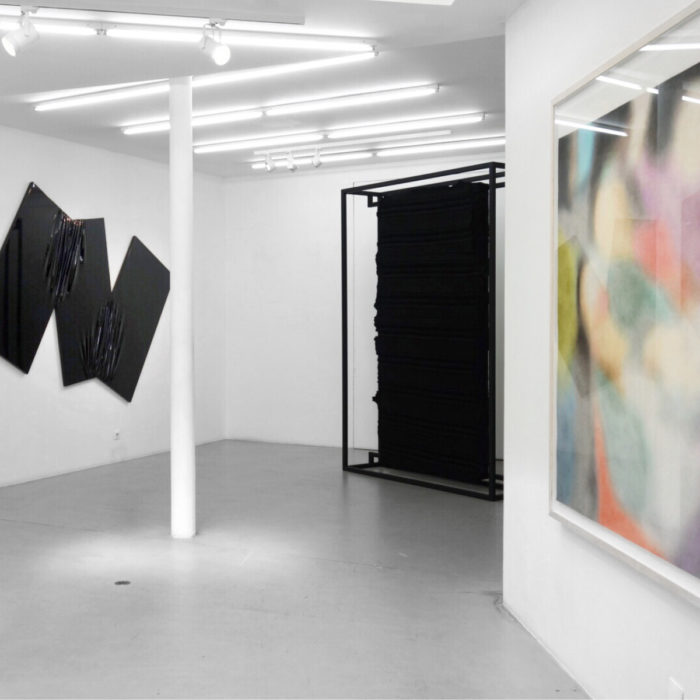
Group show
WHAT YOU’VE MISSED …
05/25/2020 - 07/25/2020 -
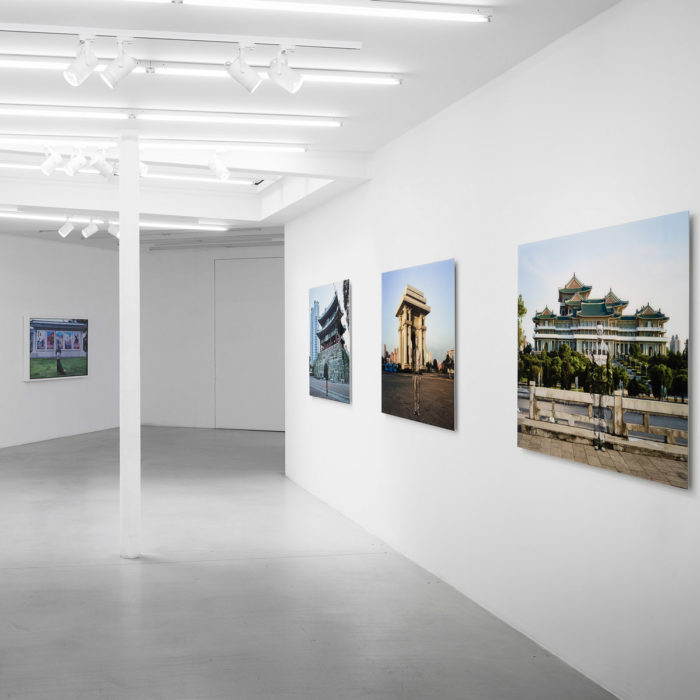
Liu Bolin
Hiding on the 38th Parallel North
09/07/2019 - 10/26/2019 -
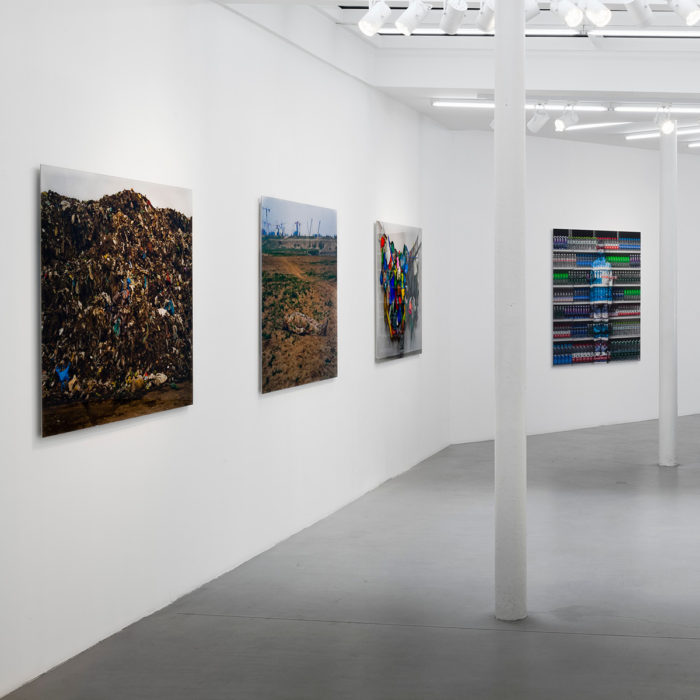
Liu Bolin
Revealing Disappearance
09/07/2017 - 10/28/2017 -
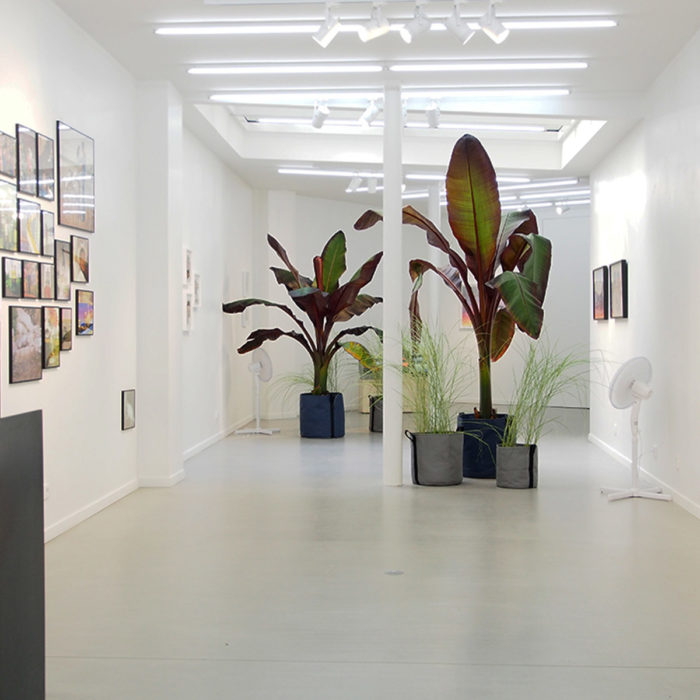
Group show
SUMMER CAMP
07/02/2016 - 07/30/2016 -
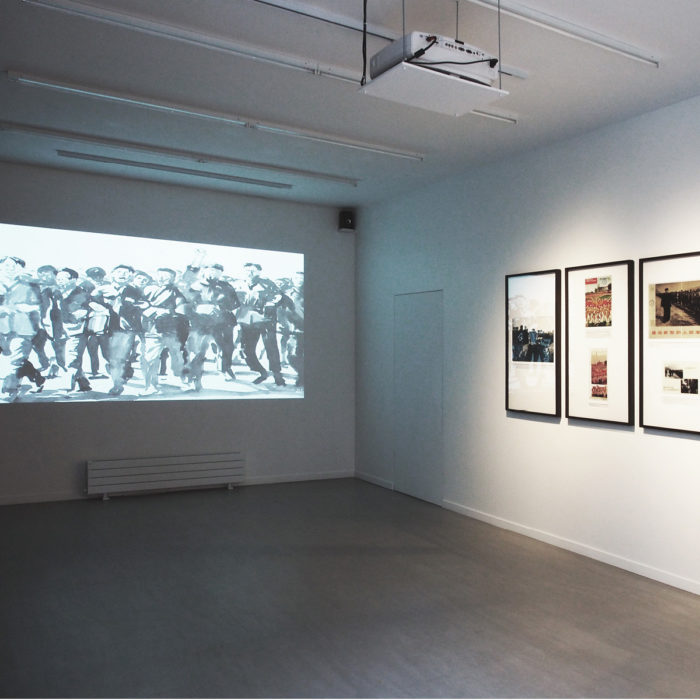
A SURVEY ON CHINA CENSURED VIDEOS & PHOTOGRAPHS
TEMPORARY BOUNDARY
11/07/2015 - 12/19/2015 -
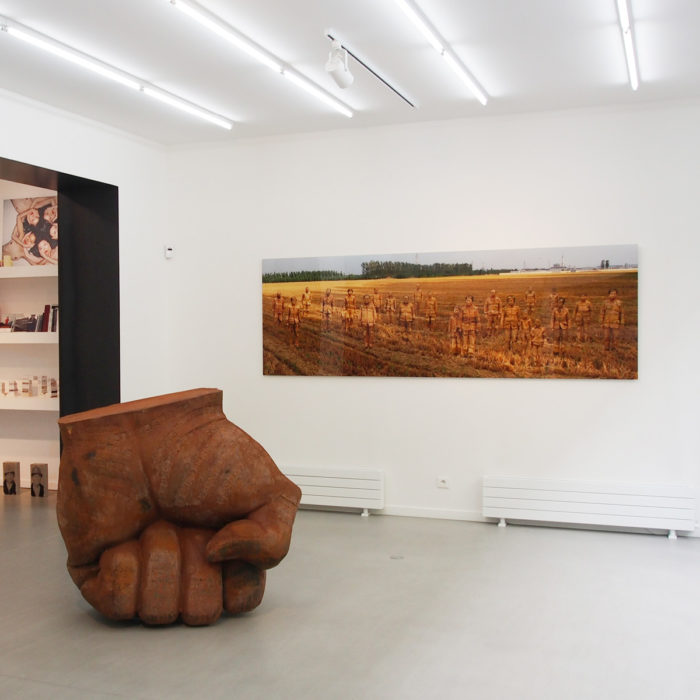
RECENT WORKS
LIU BOLIN
03/19/2015 - 05/31/2015 -
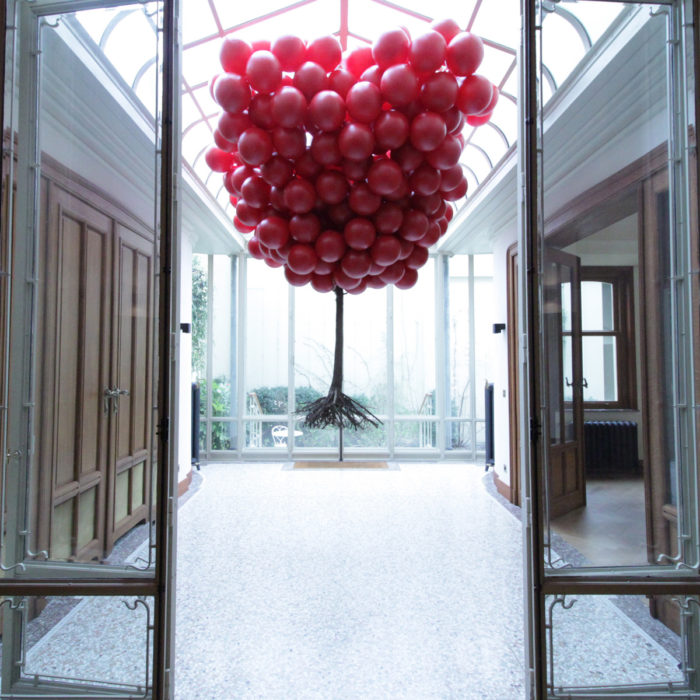
Group Show
HERE THERE NOWHERE
03/14/2015 - 04/18/2015
LIU BOLIN PERFORMANCE AT GALERIE PARIS-BEIJING IN 2014
LIU BOLIN'S INTERVIEW ON FRANCE 5
Liu Bolin is known as a sculptor, a painter, a photograph, a performance artist.
Text by Philippe Dagen, Liu Bolin, Abrams Edition, 2014
Not one of these terms is inaccurate. Not one of them is sufficient. In the selection of work presented in this book, the photography captures ephemeral performances of human figures painted to merge with their surroundings. Sculpture, in the usual meaning of the word, is not directly implicated, but that does not prevent Liu Bolin’s work from being, strictly speaking, sculptural.
Another observation, which is obvious for those who have seen some of his images, is that Liu Bolin creates through concealment. In the titles of his series, the verb hiding comes up over and over again. Man systematically disappears into the photographed landscape, whatever this landscape is-indoors or outdoors, street or supermarket, port or worksite. This technique immediately calls up the word camouflage.
Camouflage and the arts have had a rather long relationship that began at least a century ago. During World War I, a number of painters were employed in the design and fabrication of camouflaged objects, thereby rendering them -in principle, at least-invisible. Observation posts were constructed out of lumber and sheet metal to look like tree trunks, and waves were painted on the sides of battleships. Since then, the processes have improved along with technical inventions well beyond anything the first “camouflagers” could have imagined.
Still, this relationship is puzzling. A painter or a sculptor is an artist who creates something to be seen. Some have been reproached for showing too much, in defiance of morals or decency. More often others have been admonished for making false or misleading depictions that defy reality. Still others create abstracts that do not represent the world at all. Camouflage is something else altogether. The still life in a trompe-l’oeil makes you believe that there is something real where there is nothing, while camouflage makes you believe that there is nothing where there is actually something. This something or someone is often a threat or a weapon, and that is why it is hiding. By camouflaging himself in diverse places, Liu Bolin suggests that his presence is somehow disturbing.
However, camouflage is imperfect. It is perhaps the fate of any concealed object to be spotted before or after it has had time to accomplish its intended harm. But, in Liu Bolin’s case, if his silhouettes were absolutely impossible to spot, his photographs would stop being effective. We would just see the inside of a factory, a bank vault, store shelves. All of the landscapes are rather commonplaces, immediately identifiable, and of limited interest since they are so well known and have been seen innumerable times. What makes his images interesting is that one or several individuals can be found within them, concealed but visible, as long as the viewer takes the time to look attentively. One can distinguish a figure, perhaps a shape of a head that does not completely merge with the background. With the help of the clues of this nature, the eye quickly discovers the full body or bodies hidden within the image. One’s perception outsmarts the clever artifices that were supposed to hide a figure that is often in the foreground and center of the image.
Moreover, there is pleasure in finally seeing-a pleasure that is not innocent since it shares something with the satisfaction of a sharpshooter who identifies his or her target despite the artfulness that should render it invisible. Thus, Liu Bolin invites the spectator to behave like a hunter, which is a way of reminding us that to see can mean to kill and to and to be seen can mean being killed. With his imperfect camouflage, Liu Bolin places himself in a dangerous situation.
Undoubtedly this is true, but such simulated danger is a condition of much artistic activity, especially when it takes extreme forms. The demonstrations of the Viennese Actionists were the most provocative when a simulation of violence was mastered either totally or partially. The lives of those involved were not really threatened-not even when Chris Burden had them shot with a rifle-but the brutality looked real enough to make a lasting impression. The Beings hidden in the photographs of Liu Bolin are not really threats, and they are not really targets, but these notions are still at work and the sensations that accompany them are imprinted on the minds of the viewer-whether they are aware of it or not.
By turns the artist utilizes these two contrasting states of camouflage and discoverability, which share the common element of danger. Since the danger is not expressed in an obvious way-it is implied and not stated outright-it is all the more forceful. This appreciation of danger’s aesthetic appeal does not just apply to Liu Bolin. It is valid for all the visual arts and reaches even beyond them. It can be found in movies where special effects simulating catastrophes are admired for their realism; this well-deserved admiration is mixed in with the spectator’s experience of the terror that the director is trying to arouse. He is showing his technical skill-that of the engineers and the costume and digital designers. The story tends to disappear, fragmented in moments between the impressive visuals. The same thing happens in the field of photography: Sebastiao Salgado’s moving, too-beautiful images of death, destruction, and poverty are proof of it.
In contrast, a movie can generate agitation and fear without resorting too such artifices. There could be just a shadow or a noire, an instant, when you are not sure if something just moved. The invisible threat is far more disturbing than that of a shape, an appearance, a body. Not to be able to locate it, not to perceive the shape is the worst prospect, which has a physical affect that directors, such as Fritz Lang and F.W. Murnau in the past and more recently Stanley Kubrick and David Lynch, have used to their advantage. The reasons that this is effective are simple: not seeing the danger requires an increase in attention and lets the imagination run wild. Tension mounts. Reason has trouble keeping the upper hand. Briefly or at length, a Liu Bolin photograph operates on the same principles. It appears peaceful, nothing is happening, no one is there. Then one or several human presences begin to give themselves away. The banality and vacuity that seemed so unremarkable were mere pretenses. The warning inherent in these images can have universal value. It is perhaps prudent not to trust anything that appears innocent and reasonable to suspect danger at any time.
This is the real lesson to be learned from camouflage, the visual lie. During a war, when camouflaged weapons or soldiers reveal themselves, that means it is too late for their enemies. That which was inanimate comes to life, and that which was innocuous becomes deadly. But we could say the same things about viruses, toxins, cancers-all that can poison, infect, corrupt. Skin or an organ that seems healthy ca, become polluted with cancerous cells. What I am getting at with these analogies is that the significance of the camouflage and surprise in Liu Bolin’s art is found during this very revelation, the instant when it unfolds. To stick to this medical metaphor, the moment of diagnosis is when everything changes in a fraction of a second. A cell reveals itself to be cancer.
At this points, it is helpful to set aside the works of Liu Bolin just long enough to make a few observations about the real world. What is it made of? What’s in the news? Endless stories of espionage, duplicities, invisible dangers, criminal surprises, and catastrophes. It is easy to find multiple examples of these types of these types of stories in the recent past and present. Technological progress never stops creating new dangers and new means of surveillance. Ordinary people have the feeling of knowing very little about the mechanics of everything that surrounds them.
Meanwhile, they are caught in a network of information like a bird in a net-like some of Liu Bolin’s figures caught in the white wires of phone chargers and computers. A person today cannot disappear, even if he or she wants to. A clue, an imprint, a code betrays us. Even in the most remote places on the planet, we cannot escape the eyes of the satellites or the ears of some listening device. Who hasn’t seen on TV or in a movie the control-room screens that remind the viewer that they can be observed at any time? Who has not heard about revelations of Edward Snowden and thereby lost their last illusions of privacy? At the same time, these advancements-which are no advance at all-go hand in hand with forms of pollution that were unknown until now, the destruction of ecosystems, the appearance of new diseases, and all types of unnatural food processing. These disasters are imperceptible at first, though later denounced and fought against. It seems increasingly reasonable to predict that the outcome of society will be the total, or at least partial, destruction of the human race.
Today, people are caught between the certainty that there is no escape from surveillance and the feeling that the story of humanity can only come to the worst possible end. Of course, it must be said that these two convictions have particular sway in China – a country where police surveillance is an instrument of government that regularly produces tragic effects, and where the destruction of the planet by industry can be observed with a starker intensity than elsewhere. Liu Bolin was confronted with these two obvious realities throughout his life, and his “camouflaged” photographs cannot be fully understood without this information. A number of his works have a political component. “Explain to the reader”, he said to me during a conversation, “that my photographs’ strongest message is about my relationship with the Chinese reality.” He engages with food-tampering, scandals, the destruction of entire neighbourhoods, the drama of the workers who lost their jobs. He had out-of-work people sit in front of a wall on which was painted the slogan “The Communist Party is the force of progress.” He speaks to social criticism and resistance: “The more time passes, the more I ask myself questions.” Conversely, questions about the history of photography do not interest him very much. He settles the matter with a short “I never studied photography.” As to Andy Warhol, to whom he is sometimes compared, he objects-and rightly so-that while Warhol glorifies consumption, Liu Bolin himself takes a “critical stance” and “expresses his confusion and dismay.”
Therefore, Liu Bolin is a relatively young Chinese artist who, after studying sculpture and continues to sculpt, suddenly invented a new artistic object that is both photographic and a performance art. In his images, he locks in on the ideas of danger, disappearance, and anguish. They often show specifically Chinese places and the imperfect game of camouflage. By first working in his native country and later including the entire world, he composes images that at first attract, then surprise and disturb, and finally imprint themselves on the memory. He uses a unique artistic form with a rare effectiveness that is perfectly in sync with the modern times.
